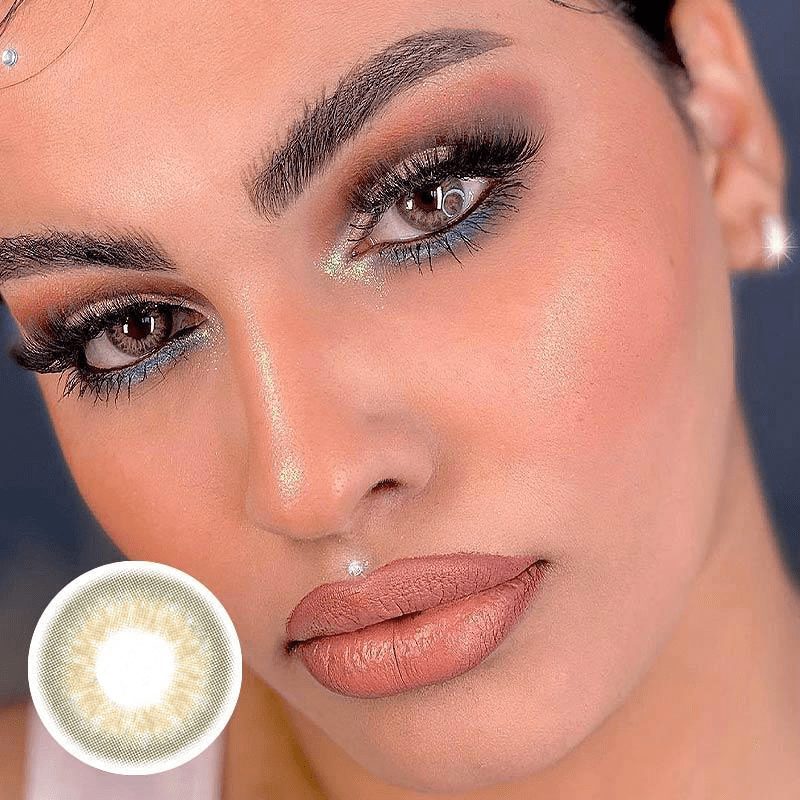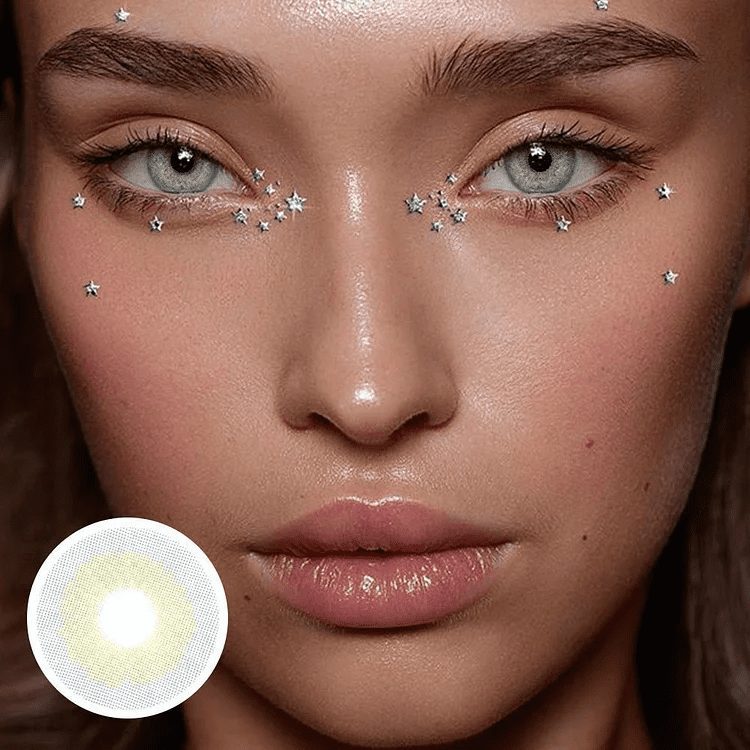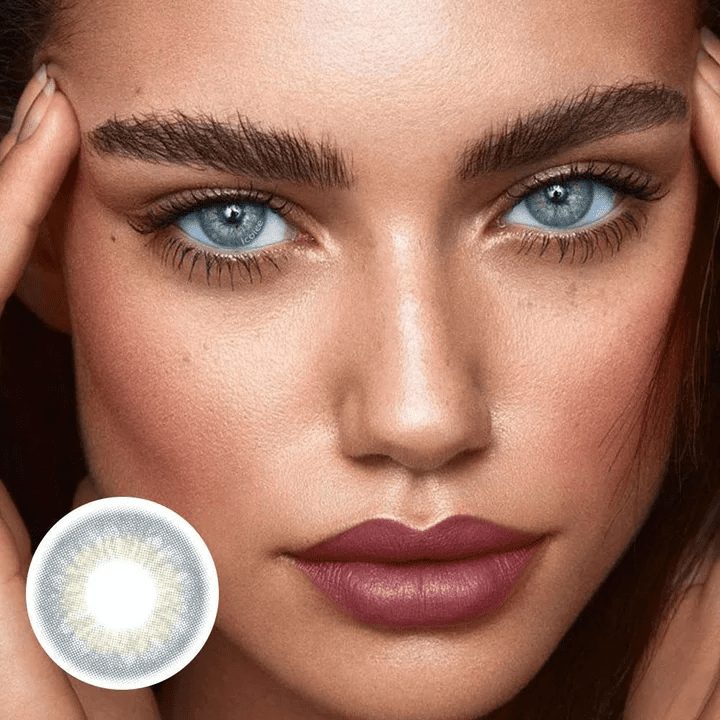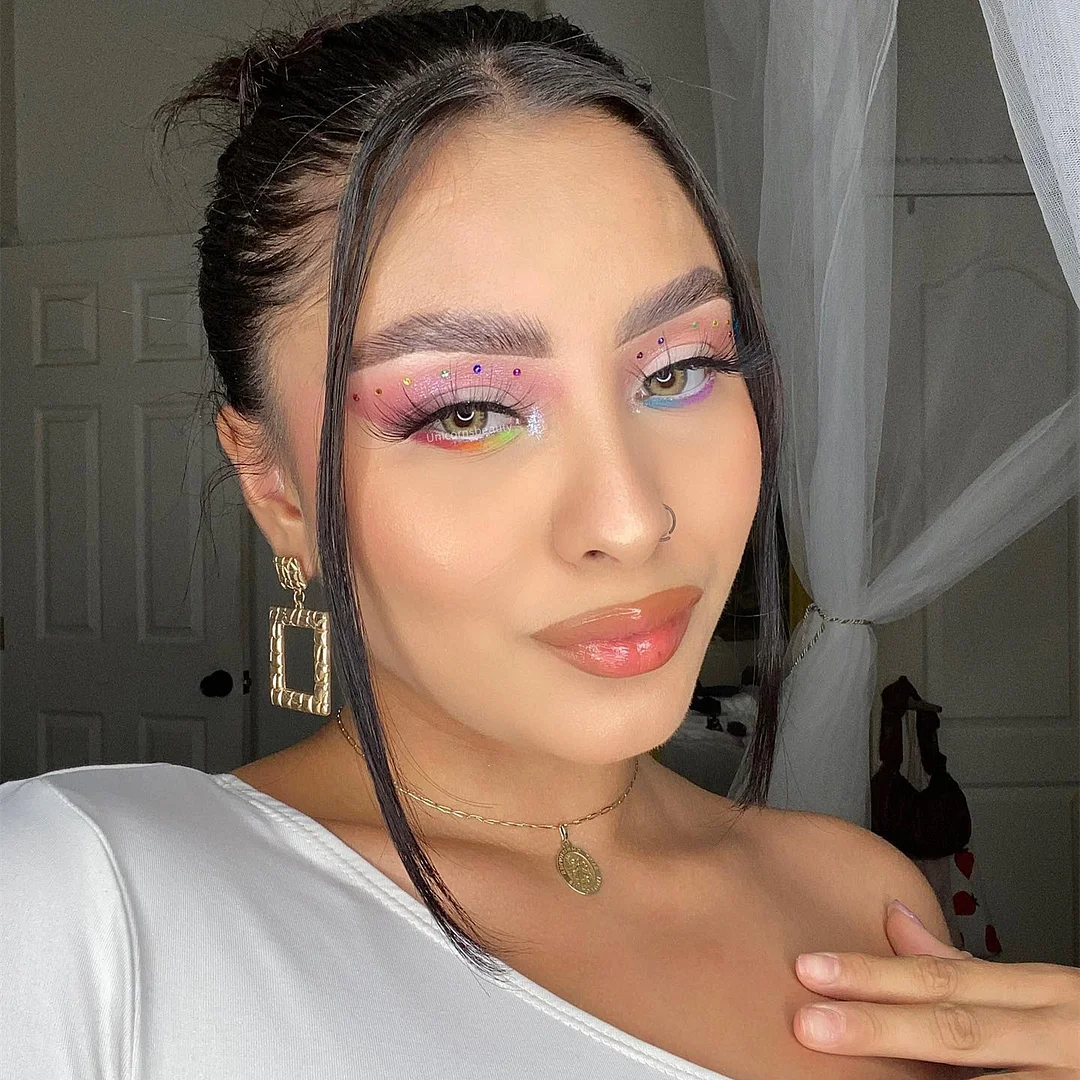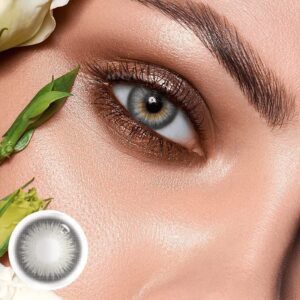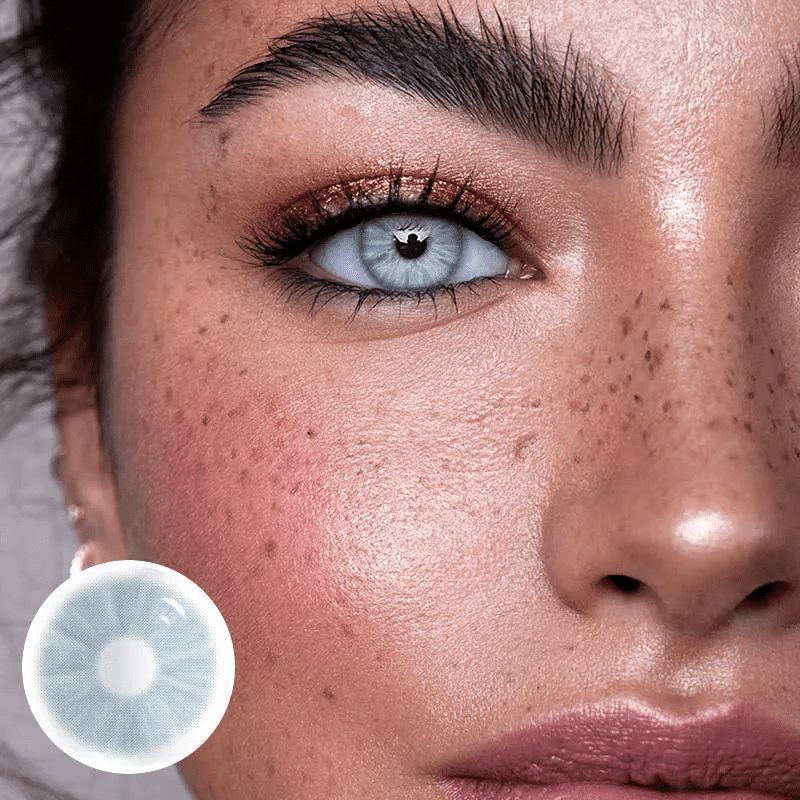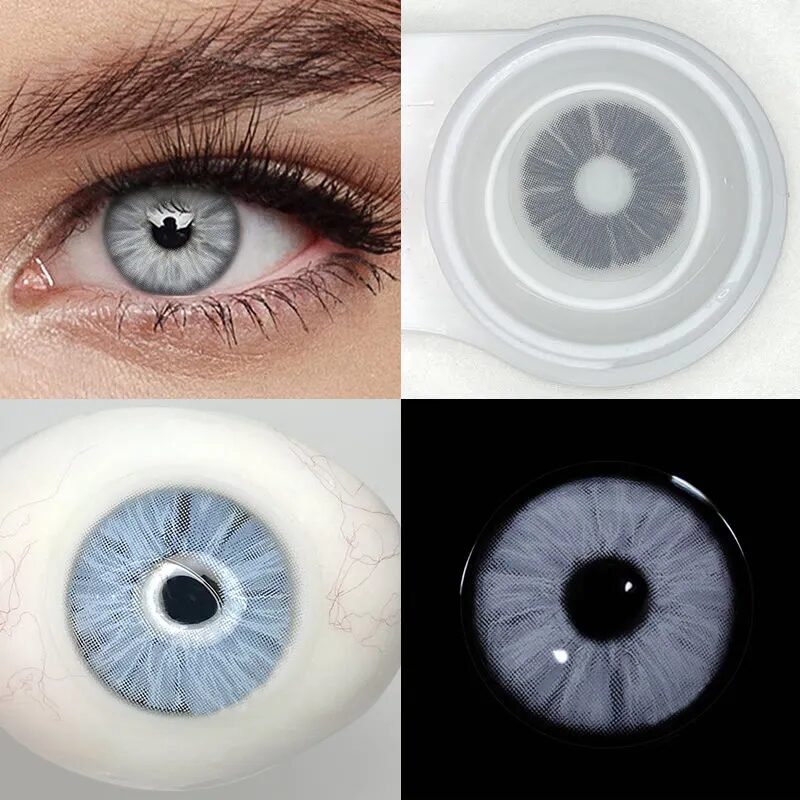
Security Considerations For Wearing Colored Contact Lenses
Posted by
Amy@Unicornsbeauty
Comments Off on Security Considerations For Wearing Colored Contact Lenses
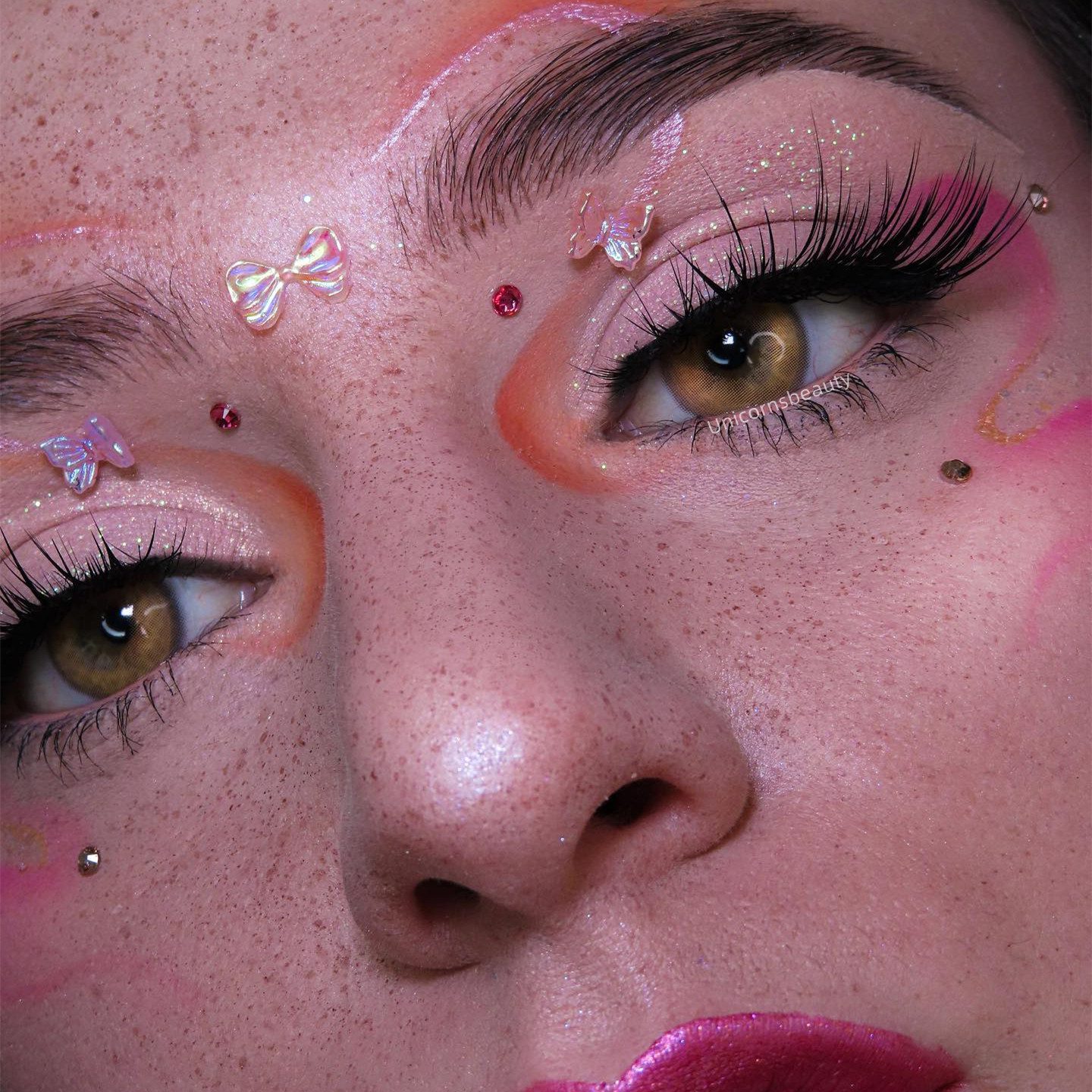
Wearing colored contact lenses can be a fun way to change your eye color or enhance your costume for special occasions like Halloween or cosplay. However, it's important to consider several security and safety factors when using these lenses to protect your eye health and overall well-being. Here are some common questions about colored contact lenses that you must be curious about.
Table of Contents
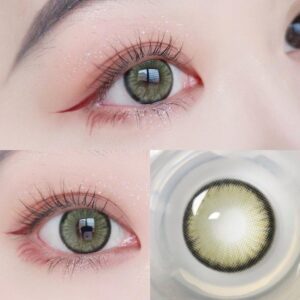
Can We Wear Contact Lenses if we Have an Astigmatism?
Astigmatism is a common vision condition that occurs when the cornea or lens of the eye has an irregular shape. Instead of being perfectly spherical, they have a more oblong shape, causing light to focus on multiple points on the retina, leading to blurry or distorted vision at both near and far distances.
Types of Contact Lenses for Astigmatism:
- Toric Contact Lenses: Toric lenses are specially designed for people with astigmatism. They have different meridians (curvature) in the lens to correct the uneven focus of light on the retina. Toric lenses are available in both soft and rigid gas permeable (RGP) materials.
- Rigid Gas Permeable (RGP) Lenses: RGP lenses can provide excellent correction for astigmatism because they maintain their shape on the eye, providing clear and stable vision. Some people with astigmatism may find RGP lenses more comfortable and effective.
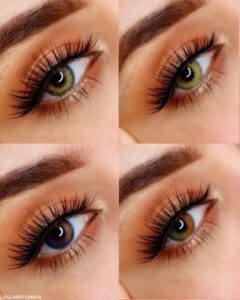
In the past, people with astigmatism often had to use rigid gas permeable contact lenses as they maintain their shape better on the eye. However, adjusting to the sensation of these lenses can be challenging. Today, there are soft contact lenses specifically designed to correct astigmatism and provide comfort.
Toric contact lenses are soft lenses that refract light in a specific direction to correct astigmatism and offer optimal comfort. These lenses are uniquely designed to stay in place on the eye, ensuring effective astigmatism correction. To achieve this, toric lenses are weighted at the bottom. There is a wide range of toric contact lenses available, including various brands and options for daily or extended wear. Unicornsbeauty contact lenses, for example, can be worn continuously for up to seven days while maintaining clear vision and providing maximum comfort for your eyes.
For more severe cases of astigmatism, your eye doctor may suggest using rigid contact lenses instead of soft toric lenses. Soft lenses may struggle to stay locked in the correct position for correcting astigmatism in individuals with severe cases. Rigid lenses correct astigmatism by providing a spherical surface on the eye. These lenses are made of a permeable and durable plastic material, allowing oxygen to flow through the lens.
Doctors recommend rigid contact lenses due to their greater rigidity compared to soft lenses. The rigidity of these lenses allows them to maintain their shape better, resulting in improved vision compared to soft toric lenses. Additionally, the different materials used in rigid lenses make them easier to clean and longer-lasting than soft lenses. However, despite their name, rigid lenses may not always be as comfortable as soft lenses.
Sale
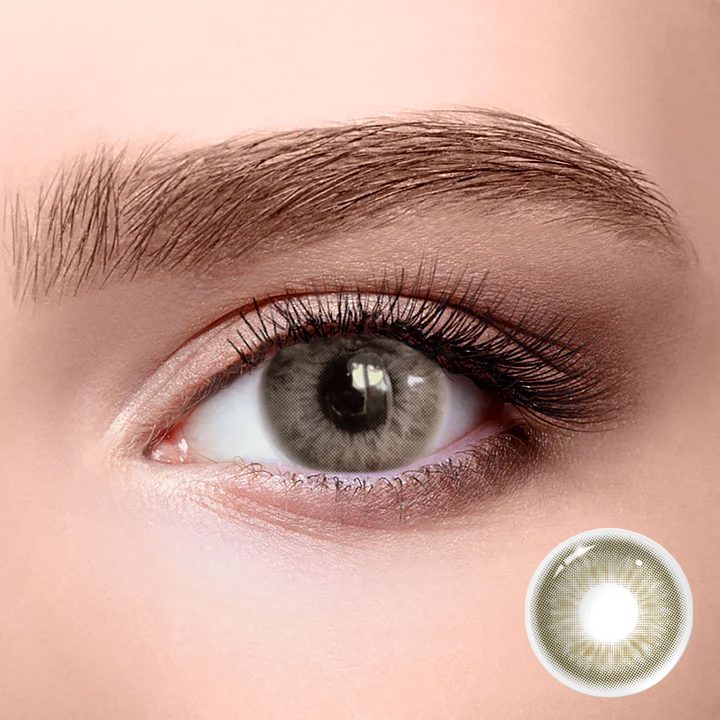
Select options
This product has multiple variants. The options may be chosen on the product page
Sale
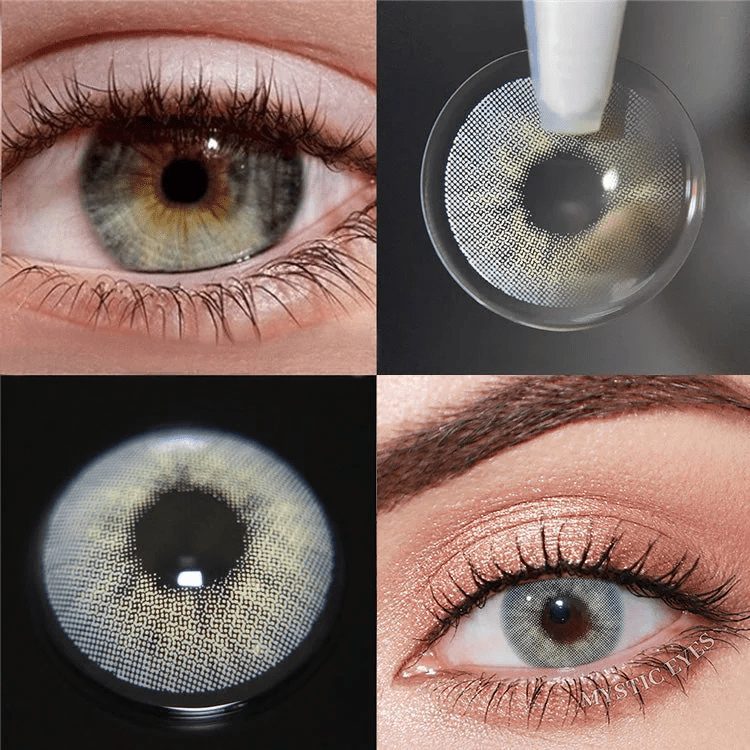
Select options
This product has multiple variants. The options may be chosen on the product page
Aqua Naked Blue Grey
Rated 5.00 out of 5
Sale
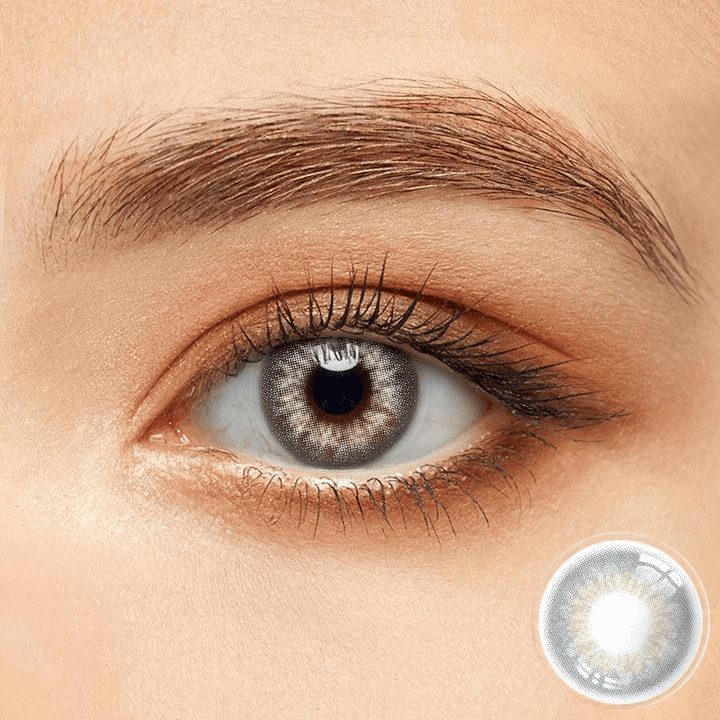
Select options
This product has multiple variants. The options may be chosen on the product page
Sale
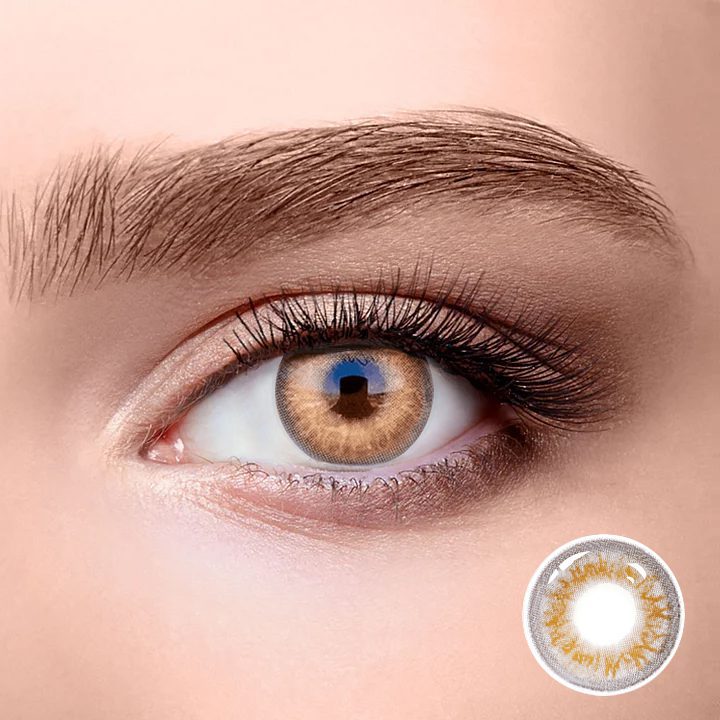
Select options
This product has multiple variants. The options may be chosen on the product page
BossGirl hazel
Rated 5.00 out of 5
Considerations for Contact Lens Wearers with Astigmatism
- Eye Examination: If you have astigmatism and want to wear contact lenses, it's essential to schedule a comprehensive eye examination with an eye care professional. They will determine the severity of your astigmatism and the most suitable contact lens prescription for your needs.
- Prescription Accuracy: Accurate prescription and fitting are critical for astigmatism correction. Toric lenses must align correctly with the irregular curvature of your eye. Your eye care provider will take precise measurements to ensure a proper fit.
- Comfort and Adaptation: Some people with astigmatism may experience a brief adaptation period when transitioning to contact lenses. It may take a little time to get used to the feel of the lenses and the clarity of vision they provide.
- Maintenance and Care: Proper contact lens hygiene is crucial to avoid complications and infections. Follow your eye care professional's instructions for cleaning, disinfecting, and replacing your lenses.
- Regular Follow-up: Keep up with regular follow-up appointments to monitor the health of your eyes and the performance of your contact lenses.
If you have an astigmatism, you can wear contact lenses designed to correct this common vision condition. Toric contact lenses and RGP lenses can provide clear and stable vision, but it's essential to work closely with an eye care professional to ensure the right fit and prescription. Advances in contact lens technology have made it possible for many people with astigmatism to enjoy the convenience and benefits of contact lens wear while maintaining clear and comfortable vision.
Overwearing Contact Lenses: Red Eye Treatment
Contact lenses offer convenience and clear vision, but overwearing them can lead to a common issue known as "red eye." Red eyes can be uncomfortable and may indicate a more serious problem if not addressed promptly. We discuss the causes of red eyes from overwearing contact lenses and provides guidance on treatment and prevention.
What happens if you wear contact lenses for too long? Well, eye doctors warn about something called contact lens overwear syndrome. You see, when you wear contact lenses for an extended period of time, your eyes don't get enough oxygen. The specific time frame before this happens can vary depending on the type and thickness of the lens as well as how you use them.
Most lenses available today are soft and designed to let a lot of oxygen through, allowing you to wear them longer. But even these have their limits. When you exceed the recommended wearing time, like sleeping with them in or going days without taking them off, you run the risk of developing contact lens overwear syndrome. So take care of your eyes and stick to the guidelines!
Contact Lens Overwear syndrome is a condition that often occurs in individuals who wear their contact lenses for extended periods, like during sleep. It can also develop if the same pair of contact lenses is used beyond their recommended lifespan without regular replacements. Typical symptoms of contact lens overwear syndrome encompass eye pain, redness, excessive tears, and potential vision blurriness and sensitivity to light. If the contact lens is not promptly removed, it may become stuck and progressively more challenging to extract.
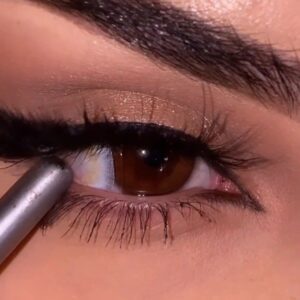
Causes of Red Eyes from Overwearing Contact Lenses
- Lack of Oxygen: Overwearing contact lenses can deprive your cornea of the oxygen it needs to stay healthy. When the cornea doesn't receive enough oxygen, it can become irritated and appear red.
- Dryness: Contacts can cause decreased tear production, leading to dry eyes. Dry eyes can cause redness, discomfort, and a gritty feeling.
- Bacterial or Fungal Infections: Overwearing or improper cleaning of contact lenses can increase the risk of bacterial or fungal infections. These infections can cause redness, pain, and sensitivity to light.
- Allergies: Some individuals may develop allergies to the materials in contact lenses or the solutions used for cleaning and disinfecting. Allergic reactions can result in red, itchy eyes.
Treatment for Red Eyes from Overwearing Contact Lenses
- Cease Contact Lens Use: If your eyes are red and irritated, the first step is to remove your contact lenses immediately. Allow your eyes to breathe and recover without the lenses.
- Use Artificial Tears: Lubricating eye drops (artificial tears) can help alleviate dryness and soothe red eyes. Make sure to choose preservative-free drops recommended by your eye care professional.
- Warm Compress: Applying a warm compress to your closed eyelids can help relieve discomfort and reduce redness. Be gentle and avoid applying excessive pressure.
- Avoid Contacts Until Symptoms Improve: Refrain from wearing contact lenses until your eyes return to their normal, healthy state. It may take a day or longer for the redness to subside.
- Consult an Eye Care Professional: If your symptoms persist or worsen after taking these initial steps, consult an eye care professional. They can assess your eye health, recommend appropriate treatment, and provide guidance on future contact lens use.
Preventing Red Eyes from Overwearing Contact Lenses
Follow Wearing Guidelines: Adhere to your prescribed wearing schedule and replace your contact lenses as recommended by your eye care professional.
Proper Hygiene: Wash your hands thoroughly before handling your lenses. Clean, disinfect, and store your lenses as instructed to prevent infections.
Limit Screen Time: Excessive screen time, especially on digital devices, can contribute to dry eyes. Follow the 20-20-20 rule: take a 20-second break every 20 minutes to look at something 20 feet away.
Stay Hydrated: Drink plenty of water to maintain overall hydration, which can help prevent dry eyes.
Regular Eye Exams: Schedule regular eye exams to monitor your eye health and ensure that your contact lens prescription is up-to-date.
Red eyes from overwearing contact lenses can be uncomfortable and a sign of underlying issues. Proper care, hygiene, and adherence to wearing guidelines are crucial for preventing this problem. If you experience redness or discomfort, take prompt action by discontinuing lens use and seeking appropriate treatment. Your eye health should always be a priority when using contact lenses.
Sale
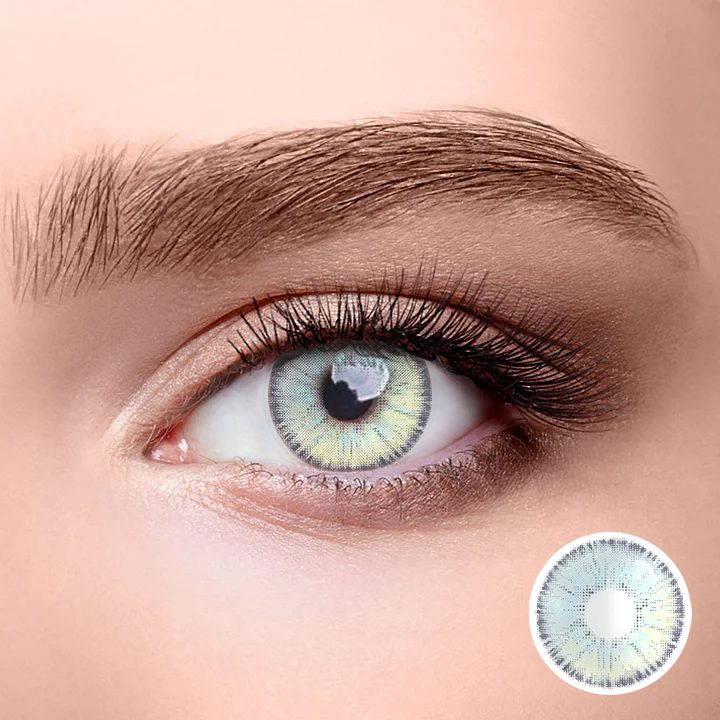
Select options
This product has multiple variants. The options may be chosen on the product page
Angeles Urban Blue
Rated 5.00 out of 5
Sale
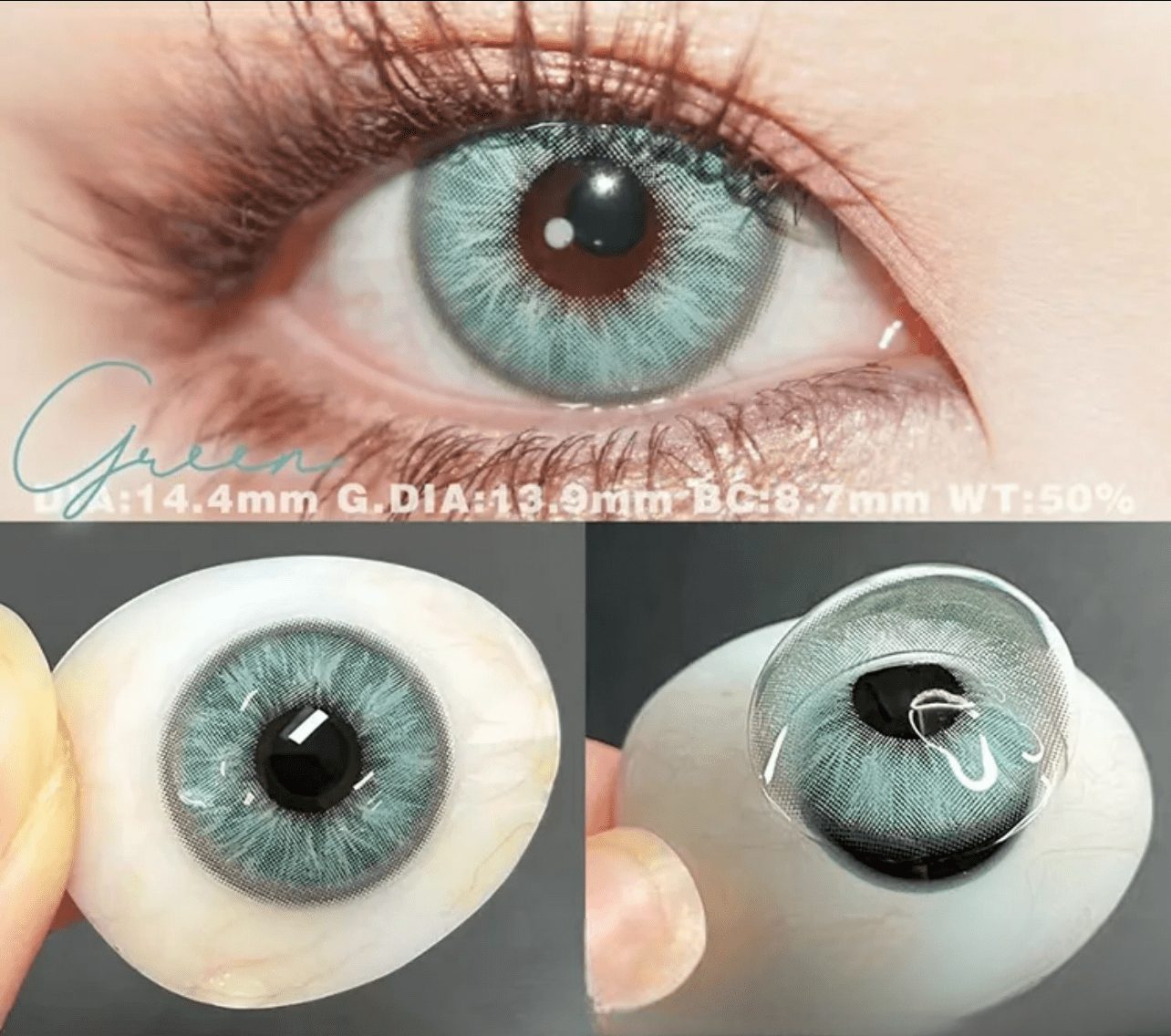
Select options
This product has multiple variants. The options may be chosen on the product page
Sleepless Artist (Daily-10 pieces)
Rated 5.00 out of 5
Sale
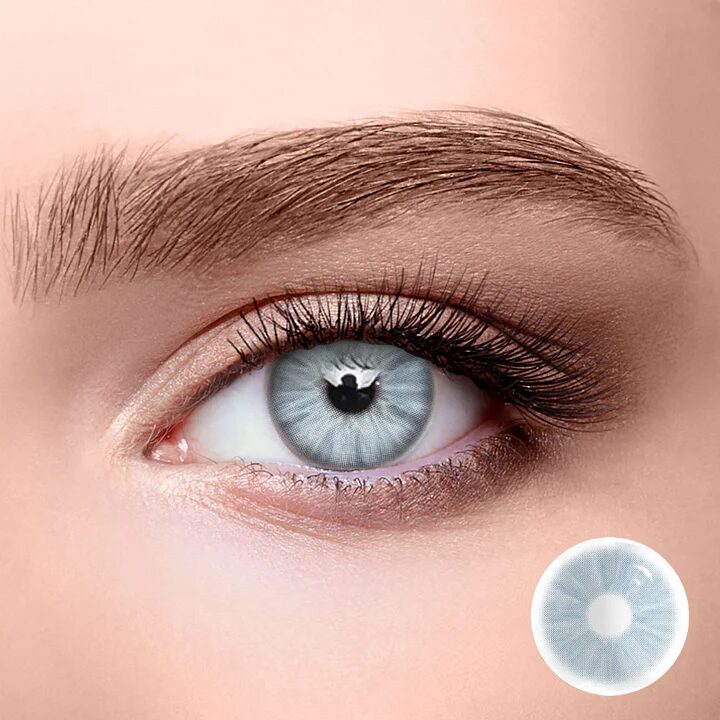
Select options
This product has multiple variants. The options may be chosen on the product page
Sale
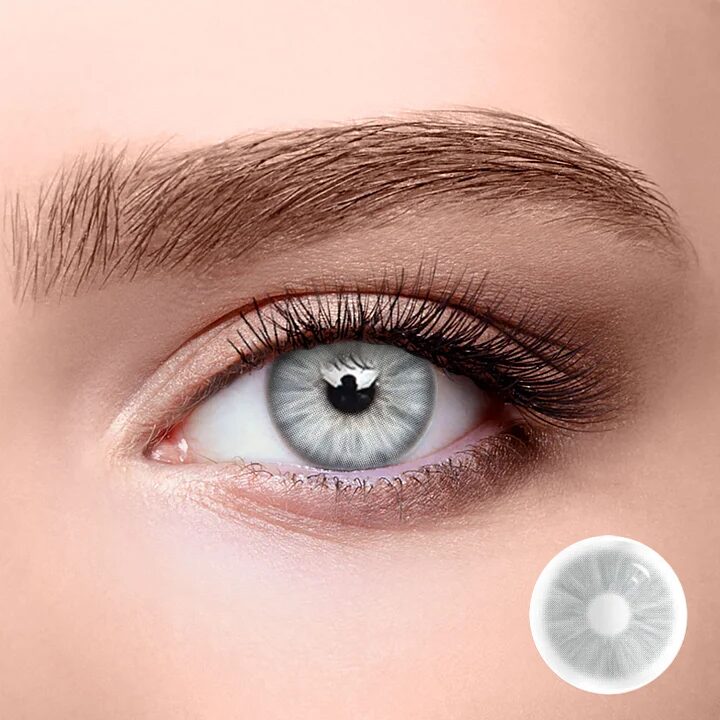
Select options
This product has multiple variants. The options may be chosen on the product page
Allergy Season and Contact Lenses: Tips for Comfortable Wear
Currently, allergy season is likely affecting many individuals, including yourself. Recent studies indicate that approximately 22 million Americans experience seasonal allergies. However, you are not alone in this struggle. With the collective knowledge and advancements in technology, effective solutions are available. Allergy season can be challenging for contact lens wearers. Seasonal allergies often bring symptoms like itchy, red, and watery eyes, which can make wearing contact lenses uncomfortable. However, with some precautions and adjustments, you can still enjoy clear vision and comfortable contact lens wear during allergy season.
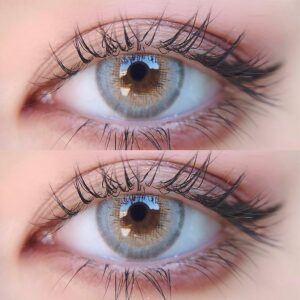
10 Tips for Managing Allergies and Contact Lenses
If you're a contact lens wearer, managing allergies during the allergy season requires extra attention and care to ensure your eyes stay comfortable and healthy. Here are some tips to help you navigate this challenging period:
- Consult Your Eye Care Professional:
Before allergy season begins, schedule an appointment with your eye care professional. They can assess your eye health, evaluate your contact lens fit, and recommend strategies to minimize allergy-related discomfort.
- Switch to Daily Disposable Lenses:
Consider using daily disposable contact lenses during allergy season. These lenses are discarded daily, reducing the buildup of allergens on the lens surface. Additionally, they eliminate the need for cleaning and disinfecting, which can be beneficial if your eyes are particularly sensitive during allergy season.
- Maintain Proper Hygiene:
If you continue using reusable lenses, ensure strict hygiene practices. Wash your hands thoroughly before handling your lenses and follow your eye care provider's instructions for cleaning, disinfecting, and storing your lenses.
- Use Preservative-Free Artificial Tears:
Preservative-free lubricating eye drops (artificial tears) can help soothe dryness and wash allergens from your eyes. Carry them with you and use them as needed to maintain comfort throughout the day.
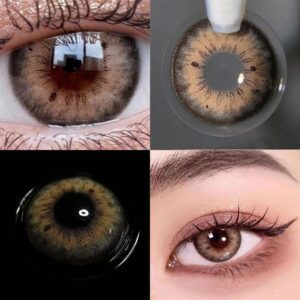
- Keep Windows Closed:
During high pollen seasons, keep windows closed at home and in your car to minimize exposure to outdoor allergens.
- Use Allergy Medications:
Over-the-counter or prescription allergy medications can help control allergy symptoms. Consult your doctor or allergist for the best treatment options based on your specific needs.
- Avoid Rubbing Your Eyes:
Rubbing your eyes can exacerbate allergy symptoms and potentially dislodge your contact lenses. Instead, gently pat your eyes if they itch or water.
- Consider Eye Allergy Drops:
Prescription or over-the-counter antihistamine eye drops can provide targeted relief for eye allergy symptoms. Consult your eye care provider for recommendations.
- Reduce Outdoor Exposure:
Limit your time outdoors, especially during peak pollen times, to minimize allergen exposure.
- Follow Professional Advice:
Always follow the guidance and recommendations of your eye care provider and allergist. They can tailor a plan to manage your specific allergies and ensure the best care for your eyes.
Seasonal allergies don't have to disrupt your contact lens wear during allergy season. By following these tips, maintaining good hygiene, and seeking professional advice when needed, you can enjoy clear vision and comfort while managing allergy-related eye symptoms.



 Gold
Gold


